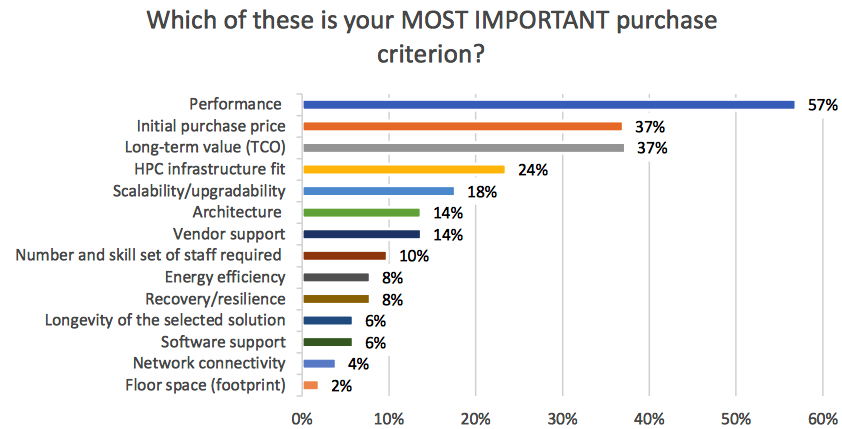Hidden Costs of HPC Storage Ownership
By Bob Murphy, director of product marketing, Panasas
This is a Press Release edited by StorageNewsletter.com on May 27, 2020 at 2:23 pm By Bob Murphy, director of product marketing, Panasas, Inc., on May 18, 2020
By Bob Murphy, director of product marketing, Panasas, Inc., on May 18, 2020
The main selection criteria for high-performance storage for years has been performance and the initial purchase price.
However, companies need to look beyond these factors to ensure they get a dependable system that does the job reliably, does not put the organization at risk, and reduces and avoids hidden costs of system ownership.
System selection must consider the impact on the bottom line, including traditional TCO issues such as the cost of labor to manage a system and the cost of downtime to the organization if the system requires frequent offline tuning or experiences unplanned outages.
Specifically, organizations need a solution that, beyond meeting the performance and acquisition cost checklist items, also is easy to manage, taking far fewer staff hours over its lifetime. The system also must be highly reliable, thus avoiding costly downtime.
Estimating the hidden costs of high-performance storage
Lifetime ownership costs have long been a factor when acquiring compute, storage, and infrastructure solutions. They were traditionally calculated based on common TCO factors include the cost of licensing, training, recruiting staff with required skills, service and warranty contracts, software, and labor to maintain the equipment, which is the largest portion of TCO.
Now, as organizations seek to accelerate their time to discovery, derive insights for real-time decision-making, extract more value from their data, and improve services and operations using sophisticated analytics, high-performance storage plays an ever-increasingly important role. As such, evaluating the cost of downtime is a significant part of any lifetime ownership calculation.
Simply put, TCO and downtime costs are at least as important (and most likely more important) as performance and acquisition cost when evaluating and selecting high-performance storage solutions. Estimates of these costs show why they need to be included in purchasing decisions.
For TCO, a Hyperion Research report based on a survey of organizations using HPC found that it takes, on average, 1.24 full-time equivalent staff to manage HPC storage, with an annual individual staff cost of $123,000. That translates to a $762,600 cost over a five-year lifetime of the system.
HPC Storage Buyers’ Most Important Purchase Criterion

Calculations of the cost of downtime dwarf those costs. There are planned and unplanned downtime factors to consider.
For planned downtime, many HPC storage systems requiring frequent tuning to ensure an organization gets the most out of its HPC investment. Tuning HPC systems is a time-consuming task that requires high skill levels. It also requires the systems to be taken offline. The Hyperion Research survey found organizations, on average, needed to tune their HPC storage systems about once a month (11.1 times a year), and it took about two hours (a quarter of a day) each time. Survey respondents estimated downtime five-year costs for tuning amounted to more than $930,000.
Unplanned downtime is even more costly. The Hyperion Research survey found that, on average, HPC users experienced 9.8 storage system failures per year that took 1.7 days to recover from. With an estimated cost of unplanned downtime cost companies $127,000 a day, that translates into a five-year cost of over $10 million. In addition to such quantifiable costs, downtime can lead to a damaged company reputation, lost revenue, and customer desertion.
These costs are summarized in the chart below.

Readers can estimate their own costs by visiting the Panasas TCO calculatorhttps://www.panasas.com/tco-calculator/.
What’s needed to reduce the hidden costs
The process of selecting an HPC storage solution should focus on the hidden costs of ownership, including TCO and downtime costs.
An ideal system is one that is easy to manage and automates many data management tasks. Such systems save costs since staff spends less time installing, tuning, and maintaining the systems. So, the same amount of storage can be managed by fewer FTEs compared to HPC storage systems that are not as easy manage. Additional TCO savings are realized since organizations can more easily find appropriate staff and do not have to spend as m uch on training current staff.
A highly-reliable system decreases downtime costs. Such a system would include HA features and built-in data management and recovery capabilities to prevent problems. These are all areas where Panasas can help.
Panasas ActiveStor Ultra is a turnkey appliance that provides performance and enterprise-grade reliability and manageability. It is designed for simplicity and limitless performance. The systems are widely used to process large and complex HPC workloads and emerging applications such as AI, precision medicine, autonomous driving, and augmented and virtual reality.
ActiveStor Ultra features PanFS 8, a re-engineered, portable parallel file system deployed on industry-standard hardware. It has an affordable cost of acquisition due to the use of Linux OS and commodity hardware. It goes from dock to data in less than a day with a plug-and-play solution that is easy to install, manage, and scale, all while maintaining low TCO at any scale.
In addition, minimal staff is needed to administer and manage the system, with no extensive training required. PanFS automates failure management and supports a range of mixed workloads without requiring tuning or retuning. It takes only part-time attention from a single person to manage the ActiveStor solution, no matter how large the storage cluster.













 Subscribe to our free daily newsletter
Subscribe to our free daily newsletter

